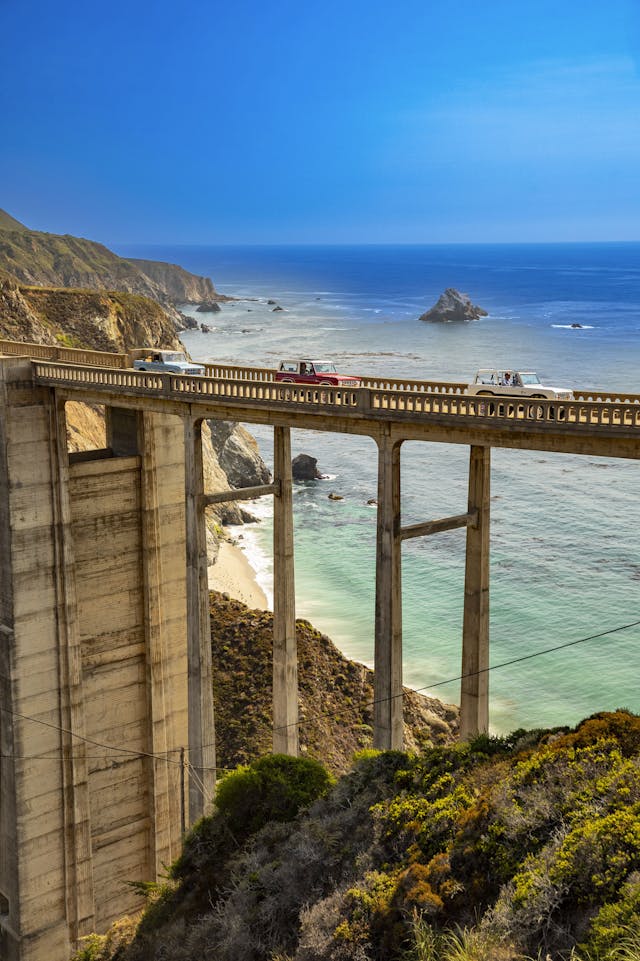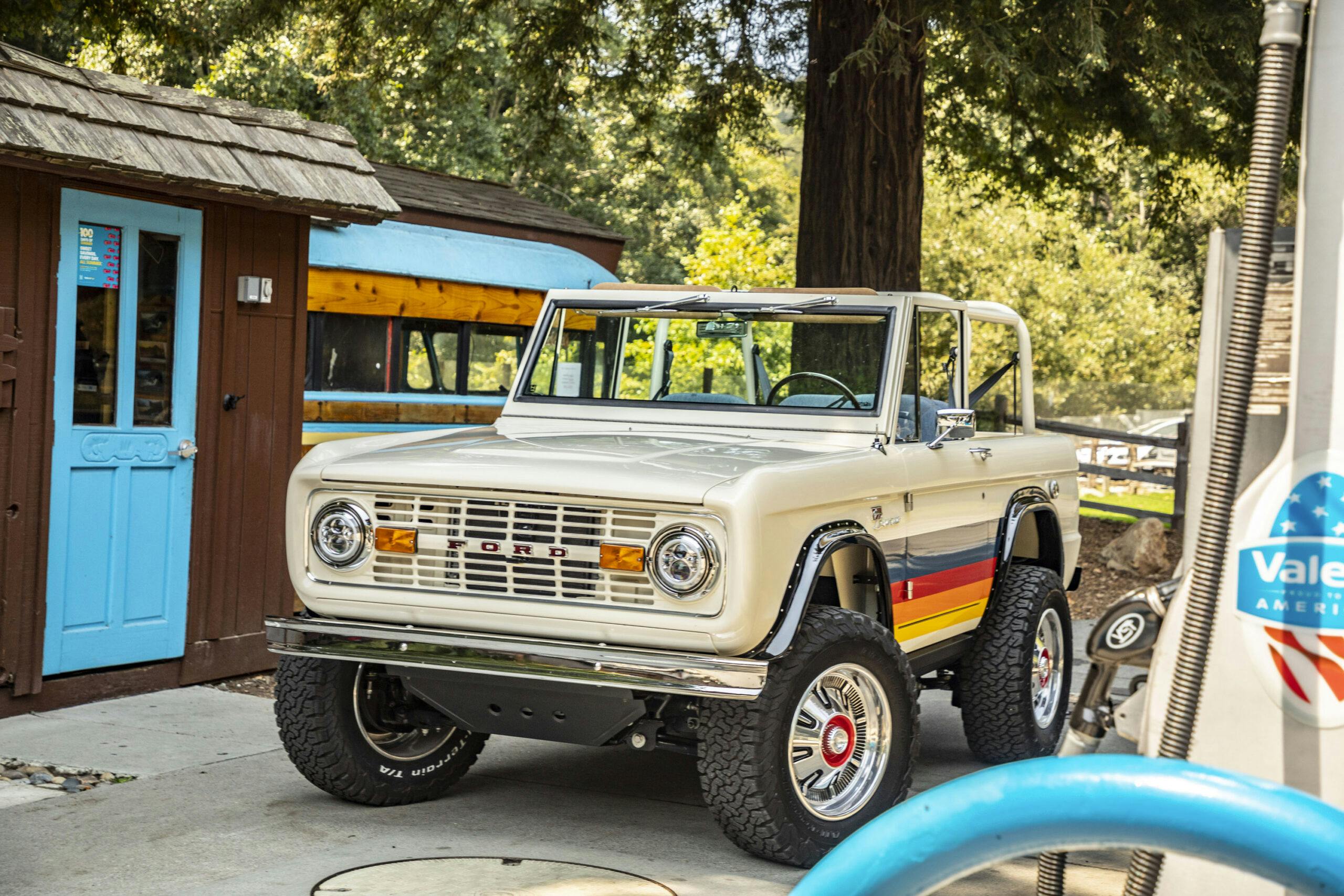Media | Articles
Gateway Bronco is reshaping the high-end 4×4 market with help from Australia
The vintage 4×4 market has been hot for years, following closely on the heels of the muscle car and sports car markets. Just like their performance car brethren, ’60s 4×4 pickups and particularly SUVs have seen a boom in demand for turn-key restomods that bring modern power and reliability. We’ve driven restomod trucks and 4x4s from a number of builders and have always come away impressed with the build quality and style, yet Gateway Bronco is looking to go one step further with its latest addition to the lineup.

Not only is the market for these high-end 4x4s hot, it’s expanding, and Gateway’s offerings should help them appeal to a wider, albeit affluent audience. Its Broncos start at $180,000 for the Fuelie model, which uses a reproduction factory chassis and suspension. The Coyote model starts at $250,000 and uses a more modern four-link suspension front and rear. The new Luxe-GT will start at $400,000, with plenty of options to take them much higher.
Marketplace
Buy and sell classics with confidence

Given the challenge of creating a chassis to give the classic Bronco modern street manners, Premcar started with the newest body-on-frame architecture around, Ford’s T6 platform. Using the same frame rail sections as a late-model Ranger or Bronco, Premcar created proprietary crossmembers to get a narrower chassis to fit the classic Bronco body. The tall, boxed frame rails help increase the chassis stiffness, which is up 70 percent compared to the stock reproduction piece used in the Fuelie. The chassis also includes crush structures front and rear to absorb crash damage. Although it was engineered in Australia, the new chassis is assembled at an ISO 9000 facility by Michigan’s RLE International, which previously has lent its engineering expertise to companies including Ford, Fisker, and Rivian.
The Luxe-GT’s suspension, while looking like a modern Bronco’s at first glance, features unique control arms and geometry. Premcar was also tasked with developing an antilock braking system that integrates with traction control and stability control systems to truly set the Luxe-GT apart from the rest of the high-end restomod 4×4 competition. Even with all-terrain tires, the braking system affords the Luxe-GT an impressive stopping time; Gateway recorded the halt from 60 mph to 0 at 143 feet, putting it in spitting distance of a new Land Rover Defender 90. That kind of performance, along with the ability to keep the vehicle pointed where the driver wants, even under panic braking situations, will be an important selling point to buyers who want to let their kids drive their classic Bronco.
Gateway invited us to extend our Monterey Car Week coverage to include a two-day drive with some of their latest Bronco builds around Carmel Valley and Big Sur. They were also so confident of their product’s on-road prowess that they brought along a Mercedes G-Wagen and a Range Rover Sport for back-to-back comparison drives. To see how much of a difference the new chassis makes, we also drove Gateway’s previous top-of-the-line Bronco, which used a Kincer chassis with four-link suspension front and rear. That Bronco, like many of the high-end custom versions we’ve driven in the past, had solid road manners, although it did require more precise attention to keep it on its desired path. While a major improvement over the stock radius-arm front/leaf-spring rear suspension of the original, it still had a decidedly classic 4×4 feel to it, despite its Coyote V-8 and 10-speed auto powertrain. No doubt, many buyers will like that kind of tactile sensation. It is still a classic car, after all, and that’s part of the appeal.

Speaking of dirt, Gateway’s drive didn’t include any challenging off-road excursions, not because their Luxe-GT isn’t capable of going off the beaten path, but because it’s meant to be a daily driver as much as it’s meant to be a vessel for a weekend getaway. With full-time all-wheel-drive, 33-inch tires (35s are optional), and the original Bronco’s compact footprint and minimal overhangs, the Luxe-GT is every bit as capable off-road as the original, and then some. As Burgett can attest after shaking down the Luxe-GT test mule in Australia, it’s able to tackle dirt roads at high speed without worrying about ending up sideways—or worse.
Gateway’s assembly line process, with employees focused on specialized roles, aims to cut lead times down to 14 weeks. That would put production at about 100 units per year, a goal the company hopes to hit next year after being on schedule to deliver 75 trucks this year. Gateway plans to shift the production mix according to demand, but Burgett believes there’s a market for about a quarter of that output to be Luxe-GT models. To make sure those customers feel confident with their purchase, the top-of-the-line Luxe-GT will come with a seven-year bumper-to-bumper warranty and offer field service, with a technician dispatched to the vehicle to diagnose and remedy any issues (this is up from three years on the Fuelie and Coyote models).
Several companies offer high-quality Broncos. Gateway seeks to set itself apart from the competition not only with its assembly-line production, which shortens lead times, but with the new Luxe-GT and all its impressive modernity. For buyers who can have just about any car they’d like, Gateway offers the kind of peace of mind that can’t be found anywhere else.
***
Check out the Hagerty Media homepage so you don’t miss a single story, or better yet, bookmark it. To get our best stories delivered right to your inbox, subscribe to our newsletters.





































These are cool but YEEKS: $180-to-$400K? Methinks I can’t even afford to look at the pictures, let alone buy one!
I agree with DUB6, these are super cool but unfortunately way way way out of my league!
A better alternative would be a daily driver Gen1, a new Bronco for daily driving and a new Bronco setup for heavy off-roading that you wouldn’t care about getting beaten up. You’d still be cheaper than the cheapest option Gateway offers. Yes, I get it–some people have so much money to play with, money is no object. I just can’t think like those people, because I wouldn’t have thought there was a market for a $400K repro Bronco, let alone 25 per year.
Sounds like they are trying to duplicate Velocity.
Restro-modded broncos going for higher prices than a Ferrari is crazy world.
How did Ford give them permission to use the name BRONCO
Right !!! These are hot rods not restorations . Ever think a bronco would have independent front suspension !! Never .
A properly restored & even slightly restomoded original Bronco would probably be just as cool & a lot cheaper than 1 of these. You could probably buy a nice restored example & add a few tricks on your own & still not hit $180,000-400,000. That is just dumb to think because they added this or that & decided it was worth that much more.
You are correct ! Give your money to REAL RESTORERS !!!!